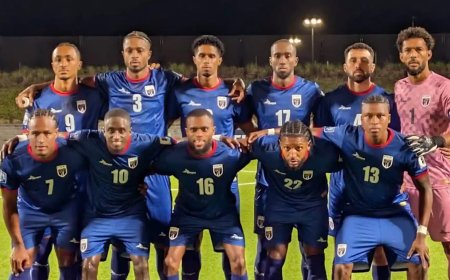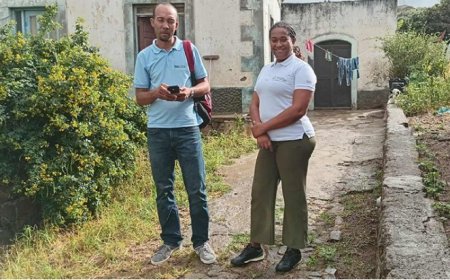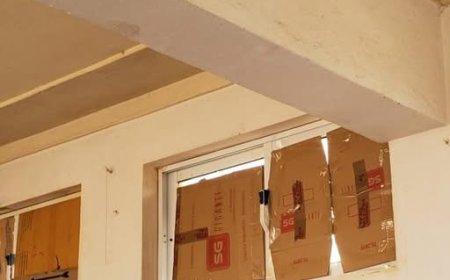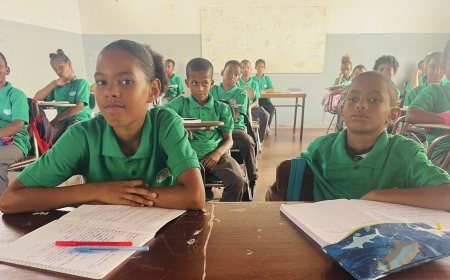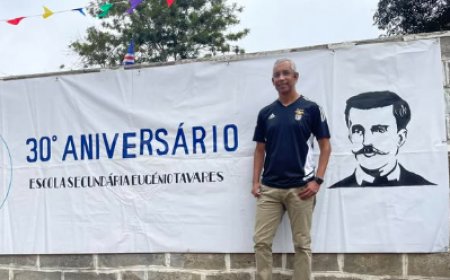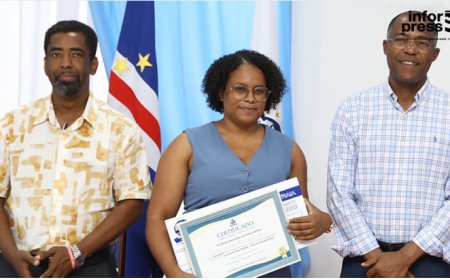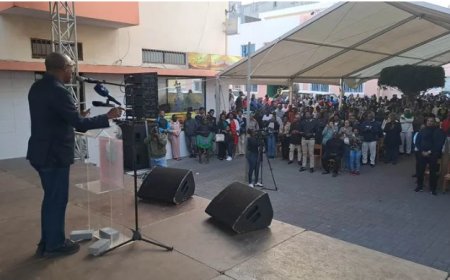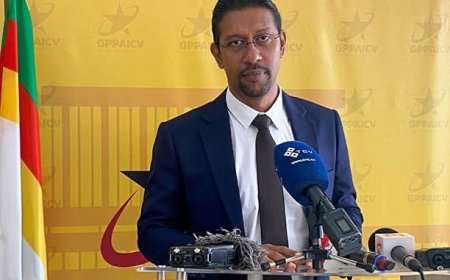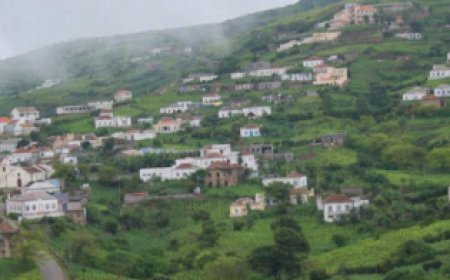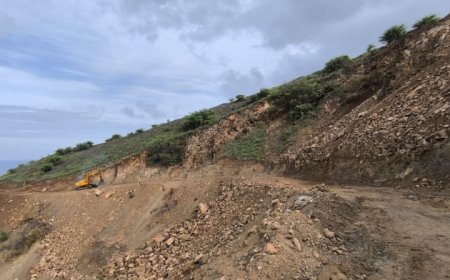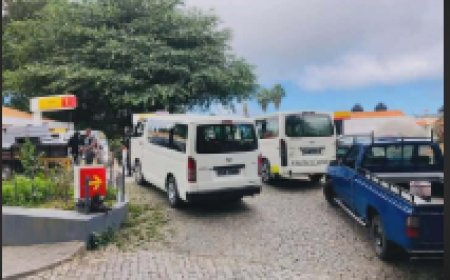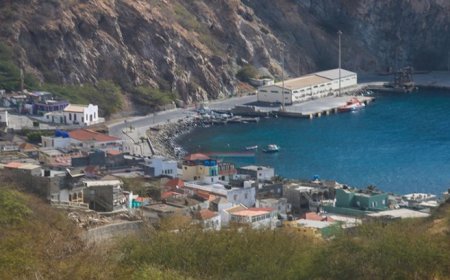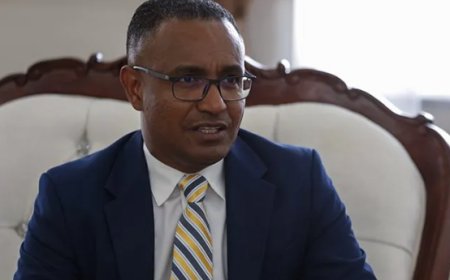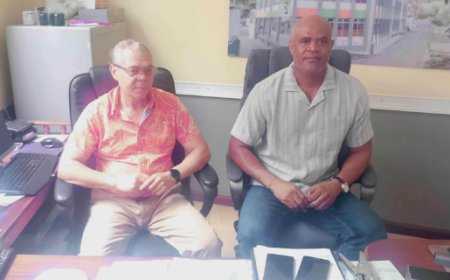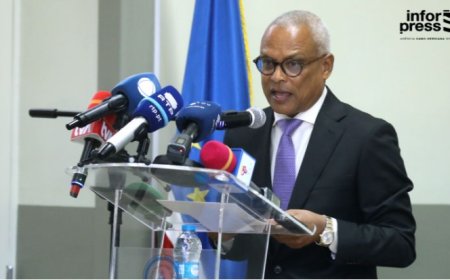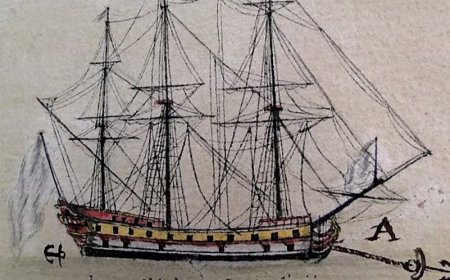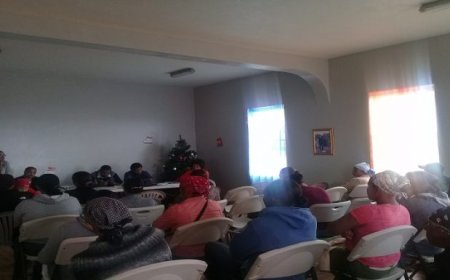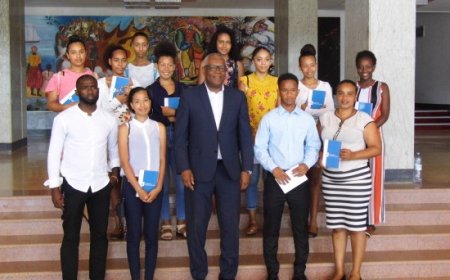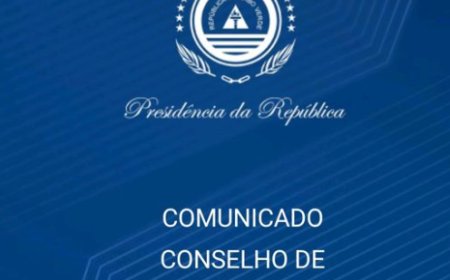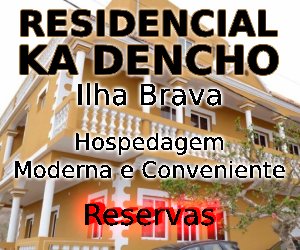Futuro de Turismo em Cabo Verde - Risa Ramos - Parte III (Final)
Futuro de Turismo em Cabo Verde - Risa Ramos - Parte III (Final)
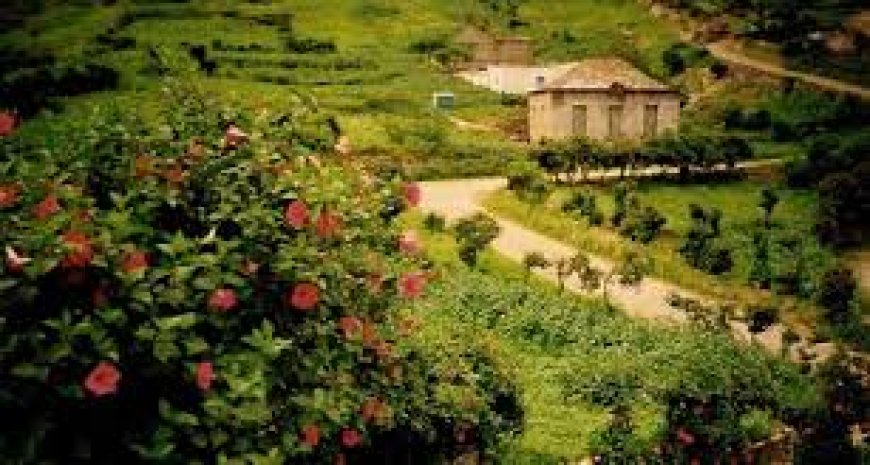
Impact of Tourism on the Local People
|
|
Tourism activities in Cape Verde made changes in the lifestyle of Cape Verdean people and caused them to be displaced and marginalized. Wearing & Neil, 2014 highlights the large influx of tourists who seek to move away from the stress and lack of "green" typical of urban life, which can result in behavior alienated from the environment they visit. The author also states that tourists do not have a "tourist culture" and understand that their free time is sacred, and that is why they have the right to enjoy what they paid for without feeling responsible for the degradation of the local environment.The environmental impacts of tourism are due to the changes and transformations that this activity causes in the natural environment
|
|
and also socioeconomic status of economic people. Wearing & Neil, (2014) points out, impacts are the result of a process of complex interactions between tourists, and communities rather than a specific cause.
Comparing Tourism on Cape Verde and Cape Cod
The complex interaction between tourists and local people that occurs in Cabo Verde in which local people are displaced, can also be seen on Cape Cod. Cape Cod’s young people are leavingwhichimpacts environmental economics. This trend is a result of changing economics due to the unaffordability of housing and lifestyle. Cape Cod’slocal population is being marginalized due to factors such as: lots of seasonal homes that satisfy the lifestyle of the seasonal population.Last February, the Economics Club of Cape Cod Community College hosted the environmental economist, Doctor Ramachandran who works for Cape Cod Commission (CCC) and told the economics class thatEighty percent (80 %)of Cape Cod homes are single family homes used as vacation homes. To satisfy the increasing demand for housing, the environment is suffering. To build houses land is cleared of trees, this action caused deforestations. However the greatest environmental impact is soil nitrification due to septic systems that affects “vegetation and marine life in saltwater ponds and estuaries onCape Cod, creating an environmental and infrastructure problem that, if left unchecked, will threaten the shell fishing industry, the tourist economy and the beaches that lure so many summer visitors(Zezima, 2010)”. Water pollution also results from irresponsible constructions and landscaping. Cape Cod and Cape Verde have the same problems related to tourism activity such as overpopulations during the summer, pollution by increase of people, loss of biodiversity, contamination of sands and waters.
Solutions to Mitigate the Negative Impact of Tourism on the Cabo Verde Islands
The negative environmental impacts of mass tourism must be changed, and an alternative solution to minimize the impacts caused by this type of activity is ecotourism. Ecotourism must be supported by environmental education, creation of protective areas, and monitoring tourism activity more closely.Since irreversible damage can compromise the areas of visitation, there is a need for care. What the demand of this tourist modality seeks is conserved environments as close to their natural state as possible.
|
|
Ecotourism is the solution because it brings small groups of people together that can explore sustainably and enjoy ratherthan exploit and damagethe gifts of each island. All of the islands possess features that can support Ecotourism. The Islands of Santo Antão, Fogo, and the interior of Santiago have the scenic beauty of valleys and mountains–excellent for hiking and trekking–and on their shores, conditions for underwater sports and marine research. Another island well suited for marine research is Santa Luzia, an uninhabited island and natural reserve park that provides habitat for rare and endemic species, especially seabirds. São Nicolau is popular for scuba diving and its famous black sandy beach in the region of Tarrafal, which can be used for therapeutic purposes, especially for treating arthritis.Maio is one of the islands that has several protected areas that safeguard the fragile ecosystem.
|
|
The island of Santiago, the first one discovered by the Portuguese, is the capital, the political, administrative, and economic center of the country. Praia City is a seabird sanctuary where traces of shipwrecks can be found. The rural areas of Santiago have several natural reserves and protected areas for exploration.The island of Fogo has a singular, unique, conical-shaped orography of a volcano, whose central element is the huge crater in the volcano's peak, which is rich in biodiversity and very productive agriculturally. The volcano area has been designated a protected area as a means of ensuring the preservation of its diverse flora. The smallest inhabited island is Brava, popularly known as "the island of flowers" due to the landscaped beauty provided by the micro-climate of its high regions. The island is also distinguished by the architectural elegance of its typical buildings, its culture based on religious and popular festivals, and its musical tradition.
- The government and society is working to minimize the negative impacts of tourism, and ecotourism is the best way to minimize these impacts and conserve local resources. According to Wearing and Neil (2001), “to cause minimal impact, it is necessary that eco-tours operate on a small scale.” With this type of tourism, educational and leisure activities in regions that present relevant attractive potential and diverse biological activity are apt to become considerable tools for the preservation and conservation of Cape Verdean environments. This model is used worldwide for instance; Cuba only allows education based tourism 2016).Thus, tourism activity in Cabo Verde should be planned for the benefit of local communities, not just tourists, and should be understood by tourists and residents as a source of new experiences, cultural exchanges, and interaction between residents and visitors.
Therefore, it is extremely important that residents, governments, tourism promoters, and businesses, reflect and discuss the impacts of tourism on natural heritage, pointing to proposals that minimize negative impacts and improve positive ones.It is important to make clear that tourism not only has negative impacts, but also advantages, but tourism activity must be well conducted and planned. In Cabo Verde, studies are needed to minimize the environmental degradation of itsareas, and regulations on use of natural resources need to be sanctioned in order to protect them.Government defined the environmental protective areas on both public and private lands, allowing economic activities to be carried out there. One objective of natural reserve and protective areas is to protect biodiversity and ensure the sustainability of the use of natural resources(Cabo Verde’s Creative Economy, 2015).
In Cape Verde, as previously described, there are several islands and 17 protected areas rich with diversified ecosystems and beautiful landscapes. There are several local communities that are economically constituted of artisanal fishing and agriculture. The government has created several programs to guarantee the conservation of the habitat and to protect the marine environment,such as the conservation of flora and marine resources. With those programs, the government hopes to improve the quality of life of the population living atthe coastand promoteecological tourism and environmental education.
Thus, there is a need to stimulate environmental education for the tourism sector as a whole (tourists, the local population, and hotel and others managers in Cabo Verde) in order to preserve the tourist attractions. Environmental education within the scope of ecotourism has the potential to help people understand the environmental issues, adding to the awareness of environmental problems, and leadpeople to have a closer relationship to the natural environment by valuing nature. To have sustainable ecotourism, we need to exercise environmentally conscious actions and practices to preserve the environment and thus minimize the negative impacts tourists cause Cabo Verde. Therefore, environmental education must be linked to the concept of ecotourism.
|
|
It is also important to analyze the environmental impacts within the country and understand the capacity of Cabo Verde to manage waste water, garbage, and energy. As Àlvares said,"integrated solid waste management emerges as an alternative that should be imperative in tourist destinations that aim to be in line with the premises and maintenance of sustainable tourism”. It is important to highlight that lawmakers (parliamentary), when asked about actions to reduce impacts on tourism in Cabo Verde, are limited to raising awareness of environmental liability. It is therefore a suggestion to implement measures to mitigate impacts from tourism, such as designing tourism activities on the islands that offer basic sanitation services (drinking water, solid waste management, and collection and final destination of waste) and tourist activities that avoid or minimize negative environmental impacts and create low-impact environmental products.
Besides thinking about all economic advantages that come from tourism, Cabo Verdean authorities should constantly monitor the impacts generated by the tourist activity by being an ally in sustainable and less impactful practices. The Minister of Tourism and other promoters should organize products minimize environmental impacts, and promote social interaction between tourists and community. Also, they should sensitize the population to environmental responsibility by participating in municipal ecological campaigns, and create tourist products that they can easy manage regardless of the number of visitors. I remember in 2004, I was a coordinator responsible for 24 hours of sport and cultural, activities sponsored by the Minister of Youth and Brava Town Hall. The activitiesbrought thousands of young people and was developedin a tiny coastal areain the village of Furna. At the end of the activities, the mission for all participant, local and tourist was to collect the garbage and cleanup the areas where the activities took place.Thus, those young people showed the population that visitors understand the importance of preserving the place. Even though they were celebrating they didn’t forget the environment. Tourism and the environment have a close interdependent relationship.
Sustainable tourism requires rational and efficient planning and should not be restricted to economic benefits, but also need to protect social, environmental, and cultural resources. To preserve social aspects, tourism in Cabo Verde must be an activity that can generate social inclusion, employment, and an income. Sustainable development must be focused on all sectors of the economy and society to guarantee economic growth. The tourism sector in Cabo Verde represents 20% of gross domestic product which is27.6 million of Cape Verdean escudos("Cabo Verde’s Creative Economy," 2015).Recent studies led by the World Tourism Organization show that tourists, especially from European countries bound for developing countries, tend to choose destinations where they can live experiences and learn about the way of life of the local population, which will help ecotourism in Cabo Verde. They, also prefer simple hotels with local atmosphere and have the maximum of contacts with the natives and learn their culture and lifestyle.
Conclusion
Mass-tourism in Cabo Verde destructively impacts the environment by over population, pollution, and the construction of tourism infrastructure. Negligent traditional tourism must develop into responsible eco-tourism that can make sustainable economic growth without causing ecological problems. The United Nations created the World Tourism Organization (UNWTO) which defines tourism as an economic activity that must safeguard the environment and natural resources while guaranteeing the satisfaction and the needs of current and future generations. Tourism in Cabo Verde can be a risky socioeconomic activity because it currently produces goods and services for the superficial satisfaction of visitors with disposable intentions and lack of concern for the local environment. Tourists visiting Cape Verde must adopt the mindset of taking only memories and leaving only footprints, or else the integrity of the islands may be compromised in the years to come.
References
Almond, R. G. (2017, April 25). Cabo Verde's Gamble: Chinese Island-Building in the Atlantic. Retrieved Http://www.easybib.com/apa-format/website-citation?#, from http://thediplomat.com/2017/04/cabo-verdes-gamble-chinese-island-building-in-the-atlantic/
C. (2017). SIA-Sistema de Informação Ambiental (CV). Retrieved May 9, 2017, from http://www.portugalcaboverde.com/item2_detail.php?lang=1&id_channel=32&id_page=96&id=64
C. V. (2015). Cabo Verde’s Creative Economy.Leveraging culture and creativity for sustainable development. United N Ations Conference on Trade And Development. United Nation
Ferreira, A. D. (1975). Língua portuguesa - dicionário. (1st ed.). Rio de Janeiro: Editora Nova Fronteira.
Fronda, A. (2015, July 16). Save the ocean: How mankind destroyed an economic force. Retrieved April 12, 2017, from https://www.worldfinance.com/infrastructure-investment/save-the-ocean-how-mankind-destroyed-an-economic-force
G. (2012, June 8). ASemana. Retrieved May 9, 2017, from http://www.asemana.publ.cv/spip.php?article77033
Gamblin, P. (2016). Jordan Economic Monitor, Fall 2016 (J. Tanzer & V. Burgener, Eds.). WWF – World Wide Fund For Nature, 1-12. Retrieved April 12, 2017, from http://www.wwf.de/fileadmin/fm-wwf/Publikationen-PDF/WWF-Report-Reviving-the-Ocean-Economy-Summary.pdf
Halliday, T. R. (2008). Why amphibians are important. International Zoo Yearbook,42(1), 7-14. Retrieved April 12, 2017.
Hanley, S. (2016, October 03). Cape Verde Leads With 100% Renewable Electricity By 2020 Target. Retrieved May 9, 2017, from https://cleantechnica.com/2016/10/03/cape-verde-leads-100-renewable-electricity-2020-target/
Horta, L. (2006, January 2). China in Cape Verde: The Dragon's African Paradise. Retrieved May 9, 2017, from https://www.csis.org/analysis/china-cape-verde-dragon%E2%80%99s-african-paradise
J. (2015, December 23). São Vicente gateway to wondrous Santo Antao. Retrieved May 9, 2017, from http://www.villastaubyn.com/2015/12/23/sao-vicente-gateway-to-wondrous-santo-antao/
Parker, L. (2017, April 08). With Millions of Tons of Plastic in Oceans, More Scientists Studying Impact. Retrieved April 12, 2017, from http://news.nationalgeographic.com/news/2014/06/140613-ocean-trash-garbage-patch-plastic-science-kerry-marine-debris/
Sofferin, M. (2016, March 16). A how-to guide to visiting Cuba that finally makes sense. Retrieved May 11, 2017, from http://www.cnn.com/2015/12/18/travel/cuba-travel-rules-explained/
Tanzer, J. (Ed.). (2016). Jordan Economic Monitor, Fall 2016. WWF – World Wide Fund For Nature, 1-12. Retrieved April 12, 2017, from http://www.wwf.de/fileadmin/fm-wwf/Publikationen-PDF/WWF-Report-Reviving-the-Ocean-Economy-Summary.pdf
W. (2017). Cape Verde Population 2017. Retrieved May 11, 2017, from http://worldpopulationreview.com/countries/cape-verde-population/
Wearing, S., & Neil, J. (2014). ECOTURISMO: IMPACTOS, POTENCIALIDADES E POSSIBILIDADES (2ª ed.). Monole.
Zezima, K. (2010, August 17). Cape Cod Waterways Face Pollution Crisis. Retrieved May 11, 2017, from http://www.nytimes.com/2010/08/18/us/18nitrogen.html
Media
https://tararecuperavel.files.wordpress.com/2013/06/praia-dos-achados_pedro-geraldes.jpg (Figure 7)
http://www.oceanpress.info/cms/media/k2/galleries/casino%20praia/ilheu-756x504.jpg
(Figure 10)
http://focusgn.com/wp-content/uploads/2017/05/2-4-africa-img-e1493713777515.jpg
(Figure 11)
http://www.riu.com/en/binaris/playa-beach_tcm55-31547.jpg
(Figure 13)




